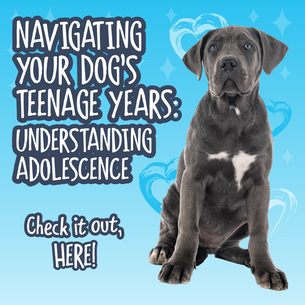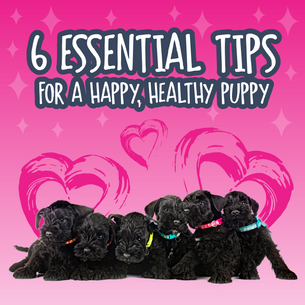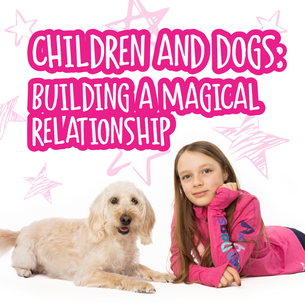Living with a reactive dog can be tough. It can be lonely. Perhaps you find yourself casting envious glances at other owners who seem to have it all worked out - whose dogs are easy to live with, unphased by life and great with other dogs. You may even be wondering what you did wrong. Why is YOUR dog the reactive one that barks at strangers, lunges at other dogs and pulls on lead?
Owning a reactive dog can feel truly overwhelming. Perhaps you’ve tried increasing the amount of exercise your dog gets in a bid to tire them out. Maybe you’ve invested time, money, and energy into training without seeing much improvement. Your dog just keeps on doing those same frustrating, challenging, and potentially dangerous things. If anything, they seem to be getting worse rather than better.
If that resonates, we’re here to tell you that there is hope! Join us as we explore seven effective strategies that will skyrocket your training, help your dog grow the skills to handle life more appropriately - and happily - and empower you to reach new levels of success and transformation with your reactive dog.
Understanding Dog Reactivity
All dogs are reactive, not just the dogs who overreact. It’s how they react, rather than whether they react, that’s important. The key thing to understand about dogs who struggle to react appropriately to situations is that they simply don’t have the skills to fit into the world they are part of. Your dog might be experiencing feelings of fear, frustration, or overexcitement, all of which can cause them to struggle with the world and behave in a way that feels challenging, or frustrating, or which gets them into trouble.
Reactive dogs often find themselves with labels. Have you ever caught yourself putting a label on your dog? Or perhaps someone else has labelled your dog.
- “Reactive”
- “Aggressive”
- “Badly socialised”
- “Over the top”
- “Unpredictable”
- “Naughty”
A label can be a convenient way of explaining a dog’s particular struggles, but the thing about labels is that they can feel hugely disempowering. Suddenly, all you see is the problem behaviour rather than the solution.
In reality, the things we label as “problem” behaviours are simply a dog’s way of communicating that something in their world isn’t right. Your dog does not want to feel or behave that way. They are just telling you - in the only way they know how - that they aren’t currently skilled to deal with the situation they have found themselves in.
So how do you help your reactive dog feel better about the world around them, and develop the skills to fit more comfortably into the situations they are going to encounter?
Concept Training - The Key to Reactive Dog Transformation
Imagine you could teach your dog all the skills they need to fit into the world they are part of and equip them to make the very best choices, whatever situation they are faced with. Step with us into the wonderful world of concept training!
Beyond Conventional Training
Where more conventional reward-based training tends to focus on training behaviours - the sit, the down, the stay, the recall - what sets concept training apart from other approaches is the understanding that a dog needs to be given the skills to navigate life and make all those great choices for themselves.
Building Blocks of the Brain
Concepts are the building blocks of your dog’s brain. These concepts include calmness, focus, disengagement, optimism, and self-control, and all of these concepts combine to make up your dog’s unique personality. It’s your dog’s brain, with its particular combination of strengths and weaknesses, that is driving their behaviour and influencing the choices they make in different situations.
Dynamic Brain Shaping
Concept training acknowledges that all the concepts in your dog’s brain are dynamic. Your dog’s brain can literally be changed and reshaped by playing games that build and reinforce those individual concepts, build new skills, and laser-target their weaknesses so you can turn them into amazing strengths!
So with that understanding, how should you be training your reactive dog? How can you manage, and reduce, their reactivity, transform their behaviour and help your reactive dog handle life more appropriately?
Strategy #1: Identify Your Dog’s Triggers
The first step to helping your reactive dog is to identify the specific triggers that cause them to react. Your dog might be worried and “reactive” towards unfamiliar people. You might notice that your dog spooks easily at novelty, or barks at strange noises, or struggles to interact appropriately and politely with other dogs.
Some dogs react to their particular triggers in all situations, while others only react in specific contexts. For example, you might notice that your dog is comfortable around other dogs off-leash but becomes reactive on lead.
Knowing what situations your dog struggles with will help you identify the skills and concepts they are a little weaker in right now.
- Is your dog pessimistic? Strange or unexpected events worry them? Your dog needs an optimism boost!
- Does your dog struggle to move away from situations that they find really exciting, or really frightening? Your dog would benefit from growing the skill of disengagement.
- Does your dog find it hard to match their energy levels to the situation they are in? Investing in calmness will be transformational!
Understanding the skills your dog is lacking will allow you to implement a training plan that will target those missing concepts.
Strategy #2: Safeguard Your Dog’s Experiences
Once you've identified your dog's triggers, it’s really important to try and avoid those triggers while you work on building your dog’s skills and reshaping their brain. This is a vital aspect of the way we train. Immersing your dog in situations they don’t have the skills to handle and trying to teach them new skills when they are already over threshold is rarely going to be successful. Just as importantly, they’re not in a space where they can learn.
It’s like trying to force a square peg into a round hole. It makes much more sense to reshape that peg so it fits into the hole.
Not only that, the more your dog practices not having the skills for a particular situation, the more they are going to rehearse inappropriate choices and less desirable behaviour - which will more than likely increase their reactivity and make the behaviour worse.
Strategy #3: Train FOR the Situation
So instead of training in the situation, we believe in training your dog for the situation.
By focusing on training in situations your dog can handle, you can ensure they master these skills before they ever need them. Whether you're working on recall, loose lead walking, calmness around visitors, appropriate interactions with other dogs, or any other important skill, training should start at home and in simple environments where your dog can learn effectively. By strengthening these foundational skills in a controlled setting, your dog will be better prepared to handle more challenging situations confidently and make the best choices when you do start opening up their world once more.
Two of the most important skills to teach your reactive dog are calmness and optimism. In fact, we think that these concepts are so vital for every dog that we’ve created free eBooks that are packed with games and strategies that are suitable for every dog.
Download your free Absolute Dogs Calm eBook.
Download your free Absolute Dogs Optimism Rocks eBook.
Check out our podcast episode Reactive Dogs: Top Tips for Training & Lifestyle Success for practical tips on managing reactive dogs, and the profound impact of positive, games-based training methods.
And if you’re looking for reactive dog training, our Naughty But Nice Bootcamps are the perfect place to start.
Strategy #4: Implement Management Strategies
One of the most important questions to ask yourself when you’re facing any kind of reactivity or behaviour struggle with your dog is what are they practising every day?
If they practise barking, they’re probably pretty good at it by now! It’s the same with reactivity towards other dogs, or people, or humping your leg when they get over-excited.
Practise Makes Perfect
Rehearsal is powerful, and dogs get really good at the things they do a lot of - especially if those things are inherently rewarding or help them cope with challenging situations. Just like any habit that you develop over time, the more you practise doing it, the more it becomes your default when you’re excited, scared, bored, or anxious.
What is Management?
In essence, management means controlling your dog’s environment - the situations you put them in and the things you expose them to - in order to prevent certain behaviour choices being repeated and practised.
Listen in to Lifestyle Secrets that Solve Dog Training Struggles for some expert tips and strategies you can implement right away.
Strategy #5: Teach Your Dog To Love a Muzzle
Muzzles! The thought of putting a muzzle on your dog can be a tough one. They carry a certain stigma. And yet we believe there is value in overcoming muzzle misconceptions and in every dog learning to wear a muzzle happily.
Regardless of whether your dog is anxious, reactive or cool as a cucumber in most situations, you never know when they might need to be muzzled - either for their own safety, or for the safety of another person interacting with your dog.
Vet visits are a great example. Even the friendliest of dogs can become difficult to handle safely if they find themselves injured and in pain. You don’t want an already stressful, scary situation to be your dog’s first experience of being muzzled, because it will make that experience much more frightening.
Dogs who have a radar for half eaten hamburgers and a tendency to scavenge food, rubbish and other dubious delicacies on walks can benefit from wearing a muzzle to keep them safe while they are learning to ignore temptations.
Depending on where you live and what adventures you and your dog are planning, there are places you might need to go where muzzles are compulsory.
If your dog struggles to interact appropriately with other dogs because of past experiences, or because they are fearful or anxious, teaching them to wear a muzzle can be truly empowering. All of a sudden, you’re more relaxed because you’re not on constant alert for things your dog might react to, so your dog will be more relaxed too.
Not only does this mean your walks are less stressful - it allows you opportunities to work on building your dog’s skills and boosting their confidence and optimism around things that worry them, or cause them to react, at an appropriate distance, while keeping everyone safe.

Ready to skill your dog up to wear a muzzle with confidence and feel like a superhero?
Get your free Mastering the Muzzle eBook and teach your dog to wear a muzzle with confidence.
When is a muzzle not the right option?
While teaching your dog to be happy wearing a muzzle is a super skill, and one we think every dog should learn, there are some really important considerations.
Is this situation right for my dog?
It’s so important that a muzzle isn’t used as a way of putting your dog in an unnecessarily stressful situation. While there is huge benefit in teaching your dog to love wearing a muzzle in case of tricky vet visits or other scenarios where the priority is to keep everyone safe, a muzzle is not a free pass to put your dog into situations they aren’t skilled to handle. If your dog struggles to interact with other dogs, a muzzle isn’t a fair or appropriate way to try and integrate them into a group of dogs, or to allow free play with other dogs in the park.
If you know your dog finds close interactions with other dogs worrying, your job as their super owner is to work outside of those situations to grow their skills, before putting them in those situations.
A muzzle isn’t punishment
A muzzle should never, ever be used as a form of punishment. Whether your dog has interacted inappropriately with a person or with another dog, or has swiped a juicy steak off your kitchen counter, their behaviour is an outward symptom of the current shape of their brain - and a very clear indication that they don’t have the skills to respond more appropriately.
Muzzling your dog to teach them a lesson or as a way of trying to communicate displeasure at something they have done won’t address the underlying issue - that lack of skills and concepts. It’s also very likely to mean your dog quickly learns to associate the muzzle with punishment and with negative experiences. Just as you wouldn’t resort to aversive tools to stop your dog pulling on lead - choosing instead to grow their understanding of calmness and disengagement and their value for proximity - so you should never use a muzzle as a way of ‘teaching your dog a lesson’.
Instead, you need to provide that training input and support they need to navigate those situations more appropriately.
Strategy #6: Management on Walks: Leads, Long Lines, Harnesses, and Collars
Perhaps your reactivity struggles with your dog primarily happen on walks. Thinking about your walking equipment, and implementing effective management strategies when you and your dog do head out can be a true gamechanger.
Think about your walking equipment
A well-fitted harness, used with a double-ended lead with clips at both ends gives you two points of connection. One end typically attaches to the back of your dog’s harness, while the other end attaches to a clip on the chest of the harness or to your dog’s collar. This allows you to walk in a much more balanced way and helps gently steer your dog without feeling like you’re pulling on their collar and risking doing damage to all those sensitive structures in their neck.
Learning games such as A to B and Giving Into Leash Pressure can give you the very best strategies for limiting reactivity and teaching your dog to move away from triggers of fear or over-excitement, while you play all the amazingly fun games that are going to reshape their brain and give them the skills they need to handle life calmly and appropriately.
Not familiar with these games? You can find them in Games Club - the home of games-based training solutions!
Change the picture
Sometimes, changing the picture by teaching your dog to walk wearing a new piece of equipment can make a huge difference.
With any piece of walking equipment you use regularly, whether that’s a harness or a collar, your dog has probably been out many times and built up a history of experiences while wearing that equipment. If your dog is also anxious or reactive to other dogs, or to things in the environment, they have had lots of rehearsal of feeling a particular way while wearing that collar or harness. A picture has been created, and that picture now means that your dog is more aware or vigilant, and possibly even more likely to react to their triggers!
As soon as you recreate that picture by popping your dog’s collar or harness on, attaching the lead and stepping out of the door, you put your dog back into that head space.
A new piece of equipment can change that picture, give you a fresh start - and allow rehearsal of what you do want. It’s really important to distinguish this from using aversive techniques and equipment to prevent pulling, or reactivity. There is never any need, or justification, for aversive tools. As your dog’s very best advocate it’s your job to safeguard their experiences, while teaching them the skills they need to handle the situations they are going to find themselves in. However, some dogs have such a history of reacting when they are wearing a particular harness or collar that if you change that picture by introducing a new piece of equipment, you get a head start on transforming that struggle and changing the outcome.
Strategy #7: Reframe Problems as Solutions
It can be very easy to get stuck in a mindset of problems and struggles when your dog’s behaviour is challenging. Sometimes working out what you DO want helps you identify a logical solution to the problem.
Perhaps your dog has started to bark and react at the living room window. Reframe that into what you do want, which might be for them to hang out calmly in the living room away from the window. How can you achieve that? You might put a baby gate over the living room door for a few weeks to restrict access when you’re not able to supervise, or focus on teaching Real Life Boundaries so you can reward your dog for being on a bed positioned away from the window.
For every dog training struggle, there is a game you can play and a strategy you can implement that will reframe that struggle into an opportunity for success!
Training and Management: A Perfect Pairing for Success
Well-rehearsed behaviours can take time to change. Your dog might have become really good at barking, or spent a lot of time feeling worried about certain situations, or learned to be very quick to react to other dogs.
Brain reshaping takes time and consistency.
Using appropriate management strategies alongside consistent, positive, games-based concept training gives you the very best chance of limiting rehearsal of all the things you'd prefer your dog didn’t get better at, while skilling them up to make all the wonderful choices you’d love them to make instead.




